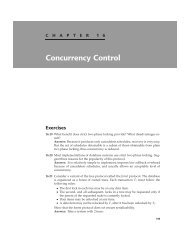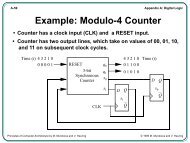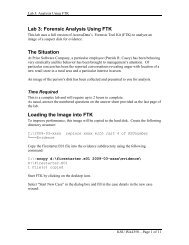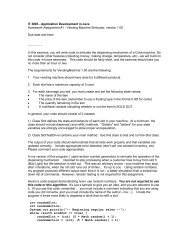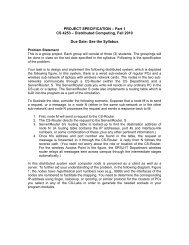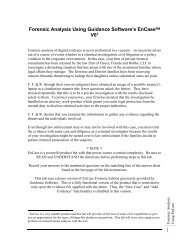Create successful ePaper yourself
Turn your PDF publications into a flip-book with our unique Google optimized e-Paper software.
DRAFT, February 18, 2003, Page 3<br />
space that is normally taken by indentation in source code, is an alternative to flow charts and other<br />
graphical representations of algorithms. The CSD is a natural extension to architectural diagrams such<br />
as data flow diagrams, call graphs, module diagrams, and class/object diagrams. Of course, using the<br />
CSD is optional, and after generating the CSD, it can be removed with a single click, leaving the source<br />
code formatted in the traditional way.<br />
Editing Features. The CSD Window, which serves as the source code editor, has some unique and<br />
powerful editing features. As the source code is edited, the CSD may be regenerated as desired.<br />
Regenerating a CSD is fast and non-disruptive (approximately 5,000 lines/sec). The source code can be<br />
folded based on CSD structure. A structure (method, loop, if statement, etc.) can be folded recursively<br />
with a double click of the mouse, then unfolded level-by-level as shown in Figure 3. Folding can be a<br />
very useful mechanism when explaining a program, whether to one’s self, to a group of students, or to<br />
colleagues during a technical code review. Standard features for program editors such as syntax based<br />
coloring and find-and-replace are provided, as well as menus and icons for compile, run, and debug.<br />
Figure 3. Source code folding





